AP® Science Lab Experiments and Protocols
It’s difficult to imagine a time when modern science was not a regular part of life. Every day, people drive on roads designed with the help of modern physics and engineering. They use the lab tests that their doctors have ordered to inform their personal health decisions. And, of course, they buy a plethora of products that have undergone vast amounts of testing and experimentation before ever reaching store shelves. It’s difficult to comprehend that modern lab experimentation has only existed since the mid-19th century, not only because it affects so many aspects of our modern world, but also because it’s vital to scientific discovery and progress.
Lab investigations are an important part of AP® science courses, as well. After all, authentic learning happens when students are given the opportunity to ask questions and discover their answers through hands-on experimentation. Although the lab investigation requirements vary for each AP science course, they all play an integral role in course curriculum. As such, we’ve compiled a list of lab investigation recommendations (by subject) and safety protocols to use in your own AP science laboratory.
AP Biology Labs
The AP Biology course incorporates thirteen lab investigation requirements aligned with the big ideas of biology. These AP Biology labs—which can all be found in the College Board®’s AP Biology Investigative Labs manual—focus on essential concepts such as evolution, energy transfer, information storage, and system interactions. Through these investigations, students explore topics like cellular respiration, molecular genetics, population dynamics, and ecological relationships.
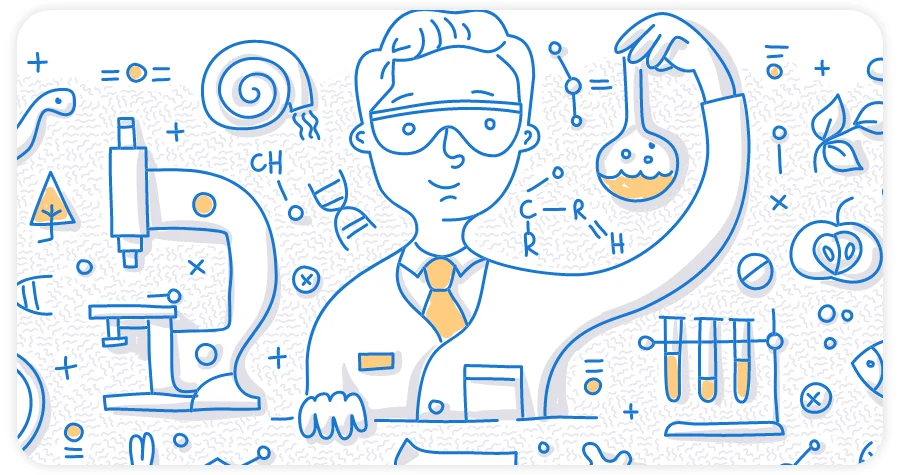
| Investigation | Lab Name | Guiding Question | Topic/Learning Objectives |
|---|---|---|---|
| Investigation 1 | Can extreme selection change expression of a quantitative trait in a population in one generation? |
(Topic 7.3) EVO-1.F: Explain how humans can affect diversity within a population. EVO-1.G: Explain the relationship between changes in the environment and evolutionary changes in the population. |
|
| Investigation 2 | Mathematical Modeling: Hardy-Weinberg | How can mathematical models be used to investigate the relationship between allele frequencies in populations of organisms and evolutionary change? |
(Topic 7.5) EVO-1.K: Describe the conditions under which allele and genotype frequencies will change in populations. EVO-1.L: Explain the impacts on the population if any of the conditions of HardyWeinberg are not met. |
| Investigation 3 | Comparing DNA Sequences to Understand Evolutionary Relationships with BLAST | How can bioinformatics be used as a tool to determine evolutionary relationships and to better understand genetic diseases? |
(Topics 3.7 & 7.9) SYI-3.A: Explain the connection between variation in the number and types of molecules within cells to the ability of the organism to survive and/or reproduce in different environments. EVO-3.B: Describe the types of evidence that can be used to infer an evolutionary relationship. EVO-3.C: Explain how a phylogenetic tree and/or cladogram can be used to infer evolutionary relatedness. |
| Investigation 4 | Diffusion and Osmosis | What causes my plants to wilt if I forget to water them? |
(Topics 2.8 & 2.3) ENE-2.H: Explain how concentration gradients affect the movement of molecules across membranes. ENE-1.B: Explain the effect of surface area-to-volume ratios on the exchange of materials between cells or organisms and the environment. ENE-1.C: Explain how specialized structures and strategies are used for the efficient exchange of molecules to the environment. |
| Investigation 5 | Photosynthesis | What factors affect the rate of photosynthesis in living leaves? |
(Topic 3.5) ENE-1.I: Describe the photosynthetic processes that allow organisms to capture and store energy. ENE-1.J: Explain how cells capture energy from light and transfer it to biological molecules for storage and use. |
| Investigation 6 | Cellular Respiration | What factors affect the rate of cellular respiration in multicellular organisms? |
(Topic 3.6) ENE-1.K: Describe the processes that allow organisms to use energy stored in biological macromolecules. ENE-1.L: Explain how cells obtain energy from biological macromolecules in order to power cellular functions. |
| Investigation 7 | Cell Division: Mitosis and Meiosis | How do eukaryotic cells divide to produce genetically identical cells or to produce gametes with half the normal DNA? |
(Topics 4.6 & 5.1) IST-1.B: Describe the events that occur in the cell cycle. IST-1.C: Explain how mitosis results in the transmission of chromosomes from one generation to the next. IST-1.F: Explain how meiosis results in the transmission of chromosomes from one generation to the next. IST-1.G: Describe similarities and/or differences between the phases and outcomes of mitosis and meiosis. |
| Investigation 8 | Biotechnology: Bacterial Transformation | How can we use genetic engineering techniques to manipulate heritable information? |
(Topic 6.8) IST-1.P: Explain the use of genetic engineering techniques in analyzing or manipulating DNA. |
| Investigation 9 | Biotechnology: Restriction Enzyme Analysis | How can we use genetic information to identify and profile individuals? |
(Topic 6.8) IST-1.P: Explain the use of genetic engineering techniques in analyzing or manipulating DNA. |
| Investigation 10 | Energy Dynamics | What factors govern energy capture, allocation, storage, and transfer between producers and consumers in a terrestrial ecosystem? |
(Topics 8.2 & 3.7) ENE-1.M: Describe the strategies organisms use to acquire and use energy. ENE-1.N: Explain how changes in energy availability affect populations and ecosystems. ENE-1.O: Explain how the activities of autotrophs and heterotrophs enable the flow of energy within an ecosystem. SYI-3.A: Explain the connection between variation in the number and types of molecules within cells to the ability of the organism to survive and/or reproduce in different environments. |
| Investigation 11 | Transpiration | What factors, including environmental variables, affect the rate of transpiration in plants? |
(Topic 8.1 & 8.4) IST-5.A: Explain how the behavioral responses of organisms affect their overall fitness and may contribute to the success of the population. ENE-3.D: Explain how the behavioral and/or physiological response of an organism is related to changes in internal or external environment. SYI-1.H: Explain how the density of a population affects and is determined by resource availability in the environment. |
| Investigation 12 | Fruit Fly Behavior | What environmental factors trigger a fruit fly response? |
(Topics 8.1 & 8.4) ENE-3.D: Explain how the behavioral and/or physiological response of an organism is related to changes in internal or external environment. IST-5.A: Explain how the behavioral responses of organisms affect their overall fitness and may contribute to the success of the population. SYI-1.H: Explain how the density of a population affects and is determined by resource availability in the environment. |
| Investigation 13 | Enzyme Activity | How do abiotic or biotic factors influence the rates of enzymatic reactions? |
(Topics 3.3, 2.3, & 3.7) ENE-1.F: Explain how changes to the structure of an enzyme may affect its function. ENE-1.G: Explain how the cellular environment affects enzyme activity. SYI-3.A: Explain the connection between variation in the number and types of molecules within cells to the ability of the organism to survive and/or reproduce in different environments (SYI-3.A.1) |
*AP® Biology Course and Exam Description1
*AP® Biology Investigative Labs Teacher Manual2
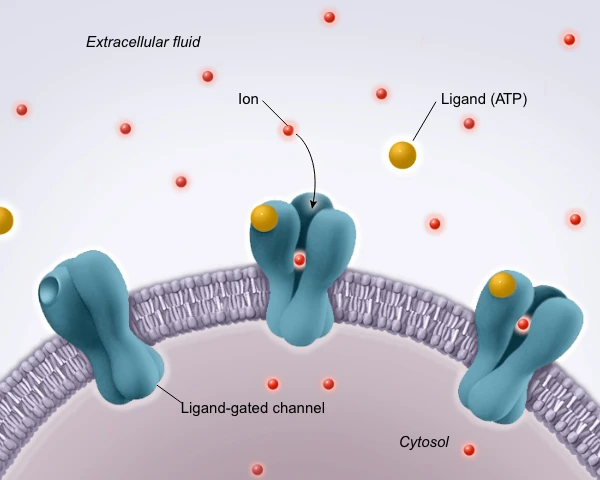
AP Chemistry Labs
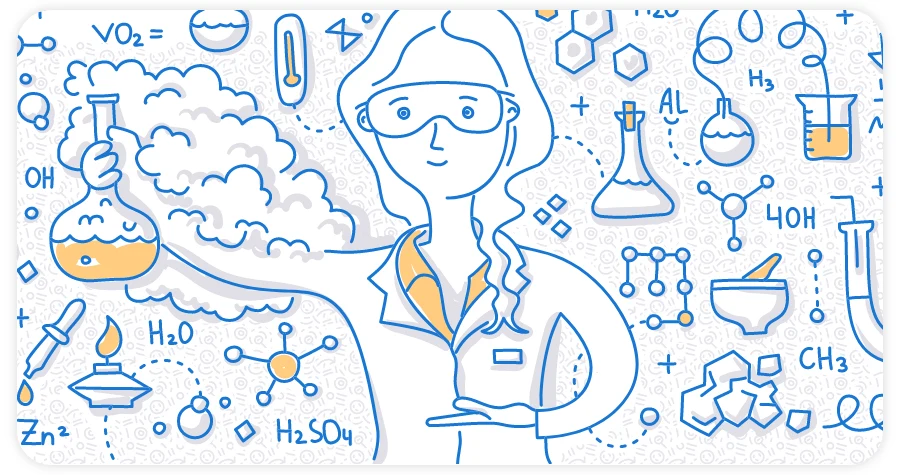
In AP Chemistry, approximately 25% of instructional time is devoted to conducting lab investigations. These AP Chemistry labs play a crucial role in helping students develop essential laboratory skills, apply chemical concepts, and explore the scientific method. The course requires a minimum of 16 hands-on labs, with at least six of them being inquiry-based. These inquiry-based AP Chemistry lab experiments promote critical thinking, problem-solving, and experimental design, allowing students to deepen their understanding of chemical principles through practical exploration.
| Investigation | Lab Name | Guiding Question | Topic/Learning Objectives |
|---|---|---|---|
| Investigation 1 | Spectroscopy | What is the relationship between the concentration of a solution and the amount of transmitted light through the solution? |
(Topic 3.11) SAP-8.A: Explain the relationship between a region of the electromagnetic spectrum and the types of molecular or electronic transitions associated with that region. |
| Investigation 2 | Spectrophotometry | How can color be used to determine the mass percent of copper in brass? |
(Topic 3.13) SAP-8.C: Explain the amount of light absorbed by a solution of molecules or ions in relationship to the concentration, path length, and molar absorptivity. |
| Investigation 3 | Gravimetric Analysis | What makes hard water hard? |
(Topics 1.1 & 1.3) SPQ-1.A: Calculate quantities of a substance or its relative number of particles using dimensional analysis and the mole concept. SPQ-2.A: Explain the quantitative relationship between the elemental composition by mass and the empirical formula of a pure substance. |
| Investigation 4 | Titration | How much acid is in fruit juice and soft drinks? |
(Topic 4.6) SPQ-4.B: Identify the equivalence point in a titration based on the amounts of the titrant and analyte, assuming the titration reaction goes to completion. |
| Investigation 5 | Chromatography | How do you separate molecules that are attracted to one another? |
(Topics 2.2 & 3.9) SAP-3.B: Represent the relationship between potential energy and distance between atoms, based on factors that influence the interaction strength. SPQ-3.C: Explain the relationship between the solubility of ionic and molecular compounds in aqueous and nonaqueous solvents, and the intermolecular interactions between particles. |
| Investigation 6 | Bonding in Solids | What’s in that bottle? |
(Topics 2.1 & 3.2) SAP-3.A: Explain the relationship between the type of bonding and the properties of the elements participating in the bond. SAP-5.B: Explain the relationship among the macroscopic properties of a substance, the particulate-level structure of the substance, and the interactions between these particles. |
| Investigation 7 | Stoichiometry | Using the principle that each substance has unique properties to purify a mixture: an experiment in applying green chemistry to purification |
(Topics 3.7 & 4.5) SPQ-3.A: Calculate the number of solute particles, volume, or molarity of solutions. SPQ-4.A: Explain changes in the amounts of reactants and products based on the balanced reaction equation for a chemical process. |
| Investigation 8 | Redox Titration | How can we determine the actual percentage of H2O2 in a drugstore bottle of hydrogen peroxide? |
(Topic 4.2) TRA-1.B: Represent changes in matter with a balanced chemical or net ionic equation:
|
| Investigation 9 | Physical and Chemical Changes | Can the individual components of Quick Ache Relief be used to resolve consumer complaints? |
(Topics 8.4 & 4.4) SAP-10.C: Identify the pH of a buffer solution based on the identity and concentrations of the conjugate acid-base pair used to create the buffer. TRA-1.D: Explain the relationship between macroscopic characteristics and bond interactions for:
|
| Investigation 10 | Kinetics: Rate of Reaction | How long will that marble statue last? |
(Topic 5.1) TRA-3.A: Explain the relationship between the rate of a chemical reaction and experimental parameters. |
| Investigation 11 | Kinetics: Rate Laws | What is the rate law of the fading of crystal violet using Beer’s law? |
(Topics 5.2 & 5.3) TRA-3.B: Represent experimental data with a consistent rate law expression. TRA-3.C: Identify the rate law expression of a chemical reaction using data that show how the concentrations of reaction species change over time. |
| Investigation 12 | Calorimetry | The hand warmer design challenge: Where does the heat come from? |
(Topics 6.4, 6.5, & 6.6) ENE-2.D: Calculate the heat q absorbed or released by a system undergoing heating/coolingbased on the amount of the substance, the heat capacity, and the change in temperature. ENE-2.E: Explain changes in the heat q absorbed or released by a system undergoing a phase transition based on the amount of the substance in moles and the molar enthalpy of the phase transition. ENE-2.F: Calculate the heat q absorbed or released by a system undergoing a chemical reactoin in relationship to the amount of the reacting substance in moles and the molar enthalpy of reaction. |
| Investigation 13 | Equilibrium | Can we make the colors of the rainbow? An application of Le Chatelier’s principle |
(Topic 7.9 & 7.10) TRA-8.A: Identify the response of a system at equilibrium to an external stress, using Le Chatelier’s principle. TRA-8.B: Explain the relationships between Q, K, and the direction in which a reversible reaction will proceed to reach equilibrium. |
| Investigation 14 | Acid-Base Titration | How do the structure and the initial concentration of an acid and a base influence the pH of the resultant solution during a titration? |
(Topic 8.8) SAP-10.B: Explain the relationship between the ability of a buffer to stabilize pH and the reactions that occur when an acid or a base is added to a buffered solution. |
| Investigation 15 | Buffering Activity | To what extent do common household products have buffering activity? |
(Topic 8.8) SAP-10.B: Explain the relationship between the ability of a buffer to stabilize pH and the reactions that occur when an acid or a base is added to a buffered solution. |
| Investigation 16 | Buffer Design | The preparation and testing of an effective buffer: How do components influence a buffer’s pH and capacity? |
(Topic 8.10) SAP-10.D: Explain the relationship between the buffer capacity of a solution and the relative concentrations of the conjugate acid and conjugate base components of the solution. |
*AP® Chemistry Course and Exam Description3
*AP® Chemistry Investigative Labs Teacher Manual4
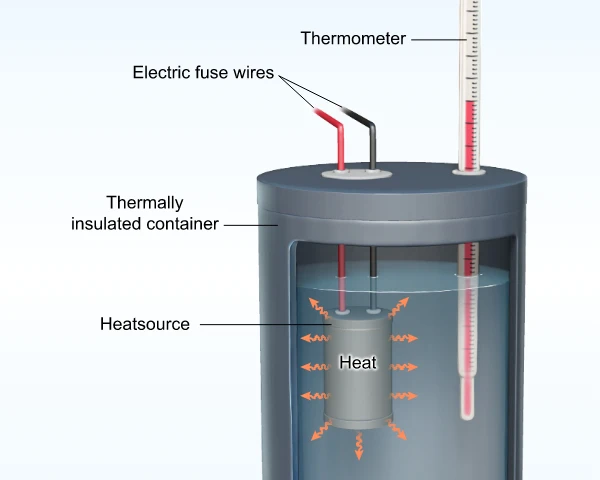
AP Environmental Science Labs
In AP Environmental Science, at least 25% of instructional time must be devoted to engaging students in hands-on, inquiry-based lab or fieldwork investigations. While there are no mandatory APES labs, we’ve provided several investigation options below that can be used to support and enhance course instruction. These AP Environmental Science labs offer students the chance to examine environmental issues and suggest potential solutions. By participating in these activities, students can develop a deeper comprehension of the interdependencies between human society and the environment.

| Investigation | Lab Name | Guiding Question | Topic/Learning Objectives |
|---|---|---|---|
| Investigation 1 | Unit 1: The Living World: Ecosystems - EcoColumns | How do ecocolumns simulate and model ecosystems, and what can we learn from studying them? |
(Topics 1.4, 1.5, 1.6, 1.7, & 1.11) ERT-1.D: Explain the steps and reservoir interactions in the carbon cycle. ERT-1.E: Explain the steps and reservoir interactions in the nitrogen cycle. ERT-1.F: Explain the steps and reservoir interactions in the phosphorus cycle. ERT-1.G: Explain the steps and reservoir interactions in the hydrologic cycle. ENG-1.D: Describe food chains and food webs, and their constituent members by trophic level. |
| Investigation 2 | Unit 1: The Living World: Ecosystems - Light in the Deep Sea | How does light availability affect primary productivity in the ocean, and what can this tell us about marine ecosystems? |
(Topics 1.1, 1.8, & 2.4) ENG-1.A: Explain how solar energy is acquired and transferred by living organisms. ERT-1.A: Explain how the availability of resources influences species interactions. ERT-2.F: Describe ecological tolerance. |
| Investigation 3 | Unit 2: The Living World: Biodiversity - Island Biogeography | How does island size and distance from the mainland influence species diversity and population dynamics according to the theory of island biogeography? |
(Topic 2.3) ERT-2.D: Describe island biogeography. ERT-2.E: Describe the role of island biogeography in evolution. |
| Investigation 4 | Unit 3: Populations - Cemetery Lab | How does the analysis of cemetery data provide insights into population dynamics, succession, and human impacts on ecosystems? |
(Topics 3.3, 3.8, 3.9, & 8.15) ERT-3.C: Explain survivorship curves. EIN-1.C: Explain how human populations experience growth and decline. EIN-1.D: Define the demographic transition. EIN-3.D: Explain human pathogens and their cycling through the environment. |
| Investigation 5 | Unit 4: Earth Systems and Resources - Coriolis Effect and Atmospheric Circulation | How does the Coriolis effect influence atmospheric circulation patterns and weather systems? |
(Topic 4.5) ERT-4.E: Explain how environmental factors can result in atmospheric circulation. |
| Investigation 6 | Unit 5: Land and Water Use - The Tragedy of the Commons | How can the concept of the tragedy of the commons help us understand and address environmental challenges? |
(Topic 5.1) EIN-2.A: Explain the concept of the tragedy of the commons. |
| Investigation 7 | Unit 5: Land and Water Use - Salinization | How does soil salinization affect the health and productivity of ecosystems, and what are the potential solutions to mitigate its impacts? |
(Topic 5.5) EIN-2.F: Describe the benefits and drawbacks of different methods of irrigation. |
| Investigation 8 | Unit 6: Energy Resources and Consumption - Kill-A-Watt Lab | How does soil salinization affect the health and productivity of ecosystems, and what are the potential solutions to mitigate its impacts? |
(Topic 6.13) ENG-3.T: Describe methods for conserving energy. |
| Investigation 9 | Unit 7: Atmospheric Pollution - Particulates Experimental Design | How does the presence of airborne particulates contribute to air pollution and its impact on human health and the environment? |
(Topics 7.1, 7.4, & 7.5) STB-2.A: Identify the sources and effects of air pollutants. STB-2.D: Describe natural sources of CO2 and particulates. STB-2.E: Identify indoor air pollutants. |
| Investigation 10 | Unit 7: Atmospheric Pollution - Tropospheric Ozone Virtual Picture Lab | How does the formation and distribution of tropospheric ozone impact air quality and human health? |
(Topics 7.1 & 7.2) STB-2.A: Identify the sources and effects of air pollutants. STB-2.B: Explain the causes and effects of photochemical smog and methods to reduce it. |
| Investigation 11 | Unit 8: Aquatic and Terrestrial Pollution - Water Quality Testing 5E Lab | How does water quality impact aquatic ecosystems and human health? |
(Topics 8.1, 8.2, 8.5, & 8.6) STB-3.A: Identify differences between point sources and nonpoint sources of pollution. STB-3.B: Describe the impacts of human activities on aquatic ecosystems. STB-3.F: Explain the environmental effects of excessive use of fertilizers and detergents on aquatic ecosystems. STB-3.G: Describe the effects of thermal pollution on aquatic ecosystems. |
| Investigation 12 | Unit 8: Aquatic and Terrestrial Pollution - Toxins Lab | How do toxins impact ecosystems and human health? |
(Topics 8.12 & 8.13) EIN-3.A: Define lethal dose 50% (LD50). EIN-3.B: Evaluate dose response curves. |
| Investigation 13 | Unit 8: Aquatic and Terrestrial Pollution - Biomagnification Lab | How does biomagnification impact food webs and ecosystems? |
(Topics 8.7 & 8.8) STB-3.H: Describe the effect of persistent organic pollutants (POPs) on ecosystems. STB-3.I: Describe bioaccumulation and biomagnification. STB-3.J: Describe the effects of bioaccumulation and biomagnification. |
| Investigation 14 | Unit 9: Global Change - Ocean Acidification Experimental Design Lab | How does ocean acidification impact marine ecosystems and what are the potential mitigation strategies? |
(Topic 9.7) STB-4.H: Explain the causes and effects of ocean acidification. |
AP Environmental Science Course and Exam Description5
AP Central: AP Environmental Science6
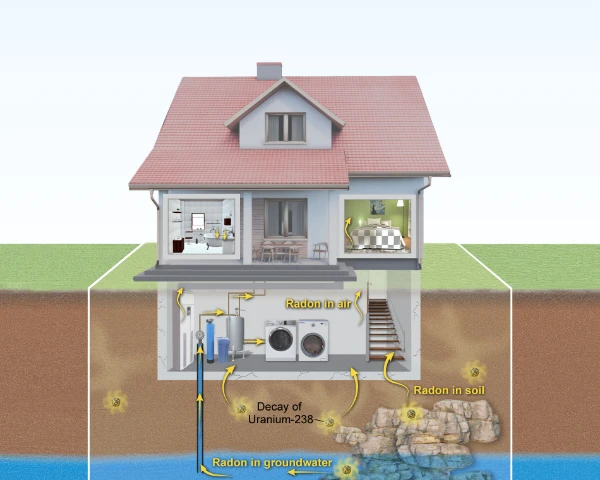
AP Physics Labs
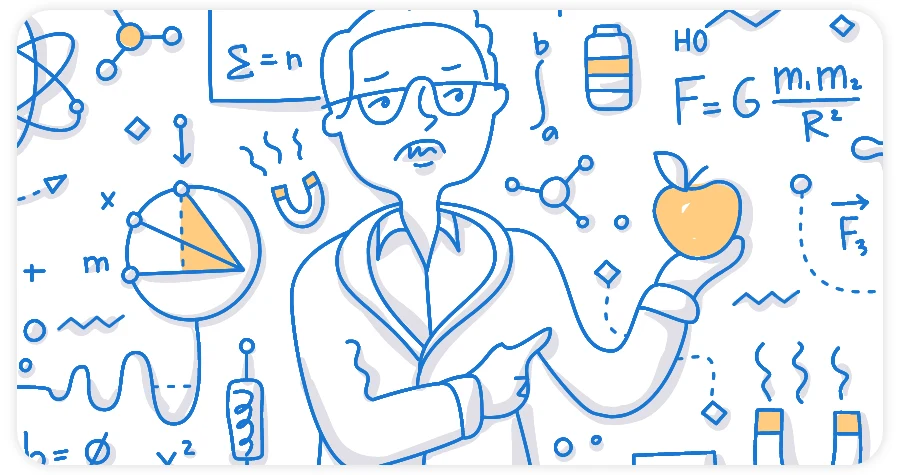
AP Physics 1 and 2 have 15 lab investigation requirements, with seven specific investigations for AP Physics 1 and eight for AP Physics 2. These inquiry-based AP Physics labs provide students with opportunities to explore fundamental concepts, develop scientific inquiry skills, and apply physics principles to real-world scenarios. Through these investigations, students engage in hands-on experimentation, data analysis, and critical thinking, allowing them to deepen their understanding of physics concepts and principles.
| Investigation | Lab Name | Guiding Question | Topic/Learning Objectives |
|---|---|---|---|
| AP Physics 1 Investigation 1 | 1D and 2D Kinematics | How is the translational motion of a ball described by kinematics? |
(Topic 1.1) 3.A.1.1 The student is able to express the motion of an object using narrative, mathematical, and graphical representations. (Science Practices 1.5, 2.1, and 2.2) 3.A.1.2 The student is able to design an experimental investigation of the motion of an object. (Science Practice 4.2) 3.A.1.3 The student is able to analyze experimental data describing the motion of an object and is able to express the results of the analysis using narrative, mathematical, and graphical representations. (Science Practice 5.1) |
| AP Physics 1 Investigation 2 | Newton’s Second Law | What factors affect the acceleration of a system? |
(2.4 & 2.5) 1.C.1.1 The student is able to design an experiment for collecting data to determine the relationship between the net force exerted on an object, its inertial mass, and its acceleration. (Science Practice 4.2) 3.A.2.1 The student is able to represent forces in diagrams or mathematically using appropriately labeled vectors with magnitude, direction, and units during the analysis of a situation. (Science Practice 1.1) |
| AP Physics 1 Investigation 3 | Circular Motion | How do you determine the period of a conical pendulum? |
(Topic 2.6) 3.B.1.1 The student is able to predict the motion of an object subject to forces exerted by several objects using an application of Newton’s second law in a variety of physical situations with acceleration in one dimension. (Science Practice 6.4) 3.B.1.2 The student is able to design a plan to collect and analyze data for motion (static, constant, or accelerating) from force measurements and carry out an analysis to determine the relationship between the net force and the vector sum of the individual forces. (Science Practices 4.2 and 5.1) 3.B.2.1 The student is able to create and use freebody diagrams to analyze physical situations to solve problems with motion qualitatively and quantitatively. (Science Practices 1.1, 1.4, and 2.2) |
|
AP Physics 1 Investigation 4 |
Conservation of Energy | How does the compression of a spring affect the motion of a cart? |
(Topic 4.3) 5.B.3.1 The student is able to describe and make qualitative and/or quantitative predictions about everyday examples of systems with internal potential energy. (Science Practices 2.2, 6.4, and 7.2) |
| AP Physics 1 Investigation 5 | Impulse and Momentum | How are force and impulse related to linear momentum and conservation of momentum? |
(Topic 5.4) 5.D.1.1 The student is able to make qualitative predictions about natural phenomena based on conservation of linear momentum and restoration of kinetic energy in elastic collisions. (Science Practices 6.4 and 7.2) 5.D.1.6 The student is able to make predictions of the dynamical properties of a system undergoing a collision by application of the principle of linear momentum conservation and the principle of the conservation of energy in situations in which an elastic collision may also be assumed. (Science Practice 6.4) 5.D.2.1 The student is able to qualitatively predict, in terms of linear momentum and kinetic energy, how the outcome of a collision between two objects changes depending on whether the collision is elastic or inelastic. (Science Practices 6.4 and 7.2) 5.D.2.4 The student is able to analyze data that verify conservation of momentum in collisions with and without an external friction force. (Science Practices 4.1, 4.2, 4.4, 5.1, and 5.3) |
| AP Physics 1 Investigation 6 | Harmonic Motion | What factors affect the motion of a pendulum? |
(Topic 6.1) 3.B.3.1 The student is able to predict which properties determine the motion of a simple harmonic oscillator and what the dependence of the motion is on those properties. (Science Practice 6.4) 3.B.3.2 The student is able to design a plan and collect data in order to ascertain the characteristics of the motion of a system undergoing oscillatory motion caused by a restoring force. (Science Practice 4.2) 3.B.3.3 The student can analyze data to identify qualitative or quantitative relationships between given values and variables (i.e., force, displacement, acceleration, velocity, period of motion, frequency, spring constant, string length, mass) associated with objects in oscillatory motion to use that data to determine the value of an unknown. (Science Practices 2.2 and 5.1) |
|
AP Physics 1 Investigation 7 |
Rotational Motion | What physical characteristics of an object affect the translational speed of the object after it has rolled to the bottom of an incline? |
(Topic 1.1) 3.A.1.1 The student is able to express the motion of an object using narrative, mathematical, and graphical representations. (Science Practices 1.5, 2.1, and 2.2) 3.A.1.2 The student is able to design an experimental investigation of the motion of an object. (Science Practice 4.2) 3.A.1.3 The student is able to analyze experimental data describing the motion of an object and is able to express the results of the analysis using narrative, mathematical, and graphical representations. (Science Practice 5.1) |
| AP Physics 2 Investigation 1 | Boyle’s Law | How can the relationship between pressure and volume for a confined gas be determined experimentally, and how do changes in pressure and volume relate to the work done on this gas? |
(Topic 2.7) 5.B.5.4 The student is able to make claims about the interaction between a system and its environment in which the environment exerts a force on the system, thus doing work on the system and changing the energy of the system (kinetic energy plus potential energy). (Science Practices 6.4 and 7.2) 5.B.5.5 The student is able to predict and calculate the energy transfer to (i.e., the work done on) an object or system from information about a force exerted on the object or system through a distance. (Science Practices 2.2 and 6.4) 5.B.5.6 The student is able to design an experiment and analyze graphical data in which interpretations of the area under a pressure-volume curve are needed to determine the work done on or by the object or system. (Science Practices 4.2 and 5.1) 5.B.7.1 The student is able to predict qualitative changes in the internal energy of a thermodynamic system involving transfer of energy due to heat or work done and justify those predictions in terms of conservation of energy principles. (Science Practices 6.4 and 7.2) |
| AP Physics 2 Investigation 2 | Fluid Dynamics | What is the mathematical relationship between the depth of a fluid in a container and the rate at which the fluid will move through an opening near the bottom? |
(Topic 1.6) 5.B.10.1 The student is able to use Bernoulli’s equation to make calculations related to a moving fluid. (Science Practice 2.2) 5.B.10.2 The student is able to use Bernoulli’s equation and/or the relationship between force and pressure to make calculations related to a moving fluid. (Science Practice 2.2) 5.B.10.3 The student is able to use Bernoulli’s equation and the continuity equation to make calculations related to a moving fluid. (Science Practice 2.2) 5.B.10.4 The student is able to construct an explanation of Bernoulli’s equation in terms of the conservation of energy. (Science Practice 6.2) |
| AP Physics 2 Investigation 3 | Resistor Circuits | How do conservation laws apply to a simple series or parallel resistor circuit? |
(Topics 4.4 & 4.5) 5.B.9.1 The student is able to construct or interpret a graph of the energy changes within an electrical circuit with only a single battery and resistors in series and/or in, at most, one parallel branch as an application of the conservation of energy (Kirchhoff’s loop rule). (Science Practices 1.1 and 1.4) 5.B.9.2 The student is able to apply conservation of energy concepts to the design of an experiment that will demonstrate the validity of Kirchhoff’s loop rule in a circuit with only a battery and resistors either in series or in, at most, one pair of parallel branches. (Science Practices 4.2 and 6.4) 5.B.9.3 The student is able to apply conservation of energy (Kirchhoff’s loop rule) in calculations involving the total electrical potential difference for complete circuit loops with only a single battery and resistors in series and/or in, at most, one parallel branch. (Science Practices 2.2 and 6.4) 5.C.3.1 The student is able to apply conservation of electric charge (Kirchhoff’s junction rule) to the comparison of electric current in various segments of an electrical circuit with a single battery and resistors in series and in, at most, one parallel branch and predict how those values would change if the configurations of the circuit are changed. (Science Practice 6.4) 5.C.3.2 The student is able to design an investigation of an electrical circuit with one or more resistors in which evidence of conservation of electric charge can be collected and analyzed. (Science Practices 4.1, 4.2, and 5.1) 5.C.3.3 The student is able to use a description or schematic diagram of an electrical circuit to calculate unknown values of current in various segments or branches of the circuit. (Science Practices 1.4 and 2.2) |
| AP Physics 2 Investigation 4 | RC Circuits | How do the resistors and capacitors in an RC circuit affect the behavior of the circuit? |
(Topic 4.3) 4.E.5.1 The student is able to make and justify a quantitative prediction of the effect of a change in values or arrangements of one or two circuit elements on the currents and the potential differences in a circuit containing a small number of sources of emf, resistors, capacitors, and switches in series and/or parallel. (Science Practices 2.2 & 6.4) 4.E.5.2 The student is able to make and justify a qualitative prediction of the effect of a change in values or arrangements of one or two circuit elements on currents and potential differences in a circuit containing a small number of sources of emf, resistors, capacitors, and switches in series or parallel. (Science Practices 6.1 & 6.4) 4.E.5.3 The student is able to plan data collection strategies and perform data analysis to examine the values of currents and potential differences in an electric circuit that is modified by changing or rearranging circuit elements, including sources of emf, resistors, and capacitors. (Science Practices 2.2, 4.2, & 5.1) |
| AP Physics 2 Investigation 5 | Magnetism | How can we investigate magnetic fields? |
(Topic 5.5) 2.D.2.1 The student is able to create a verbal or visual representation of a magnetic field around a long straight wire or a pair of parallel wires. (Science Practice 1.1) 2.D.3.1 The student is able to describe the orientation of a magnetic dipole placed in a magnetic field in general and the particular cases of a compass in the magnetic field of the Earth and iron filings surrounding a bar magnet. (Science Practice 1.2) 2.D.4.1 The student is able to use the representation of magnetic domains to qualitatively analyze the magnetic behavior of a bar magnet composed of ferromagnetic material. (Science Practice 1.4) |
| AP Physics 2 Investigation 6 | Electromagnetic Induction | What factors relate to the production of an emf in the interaction of a magnetic field and a coil of wire? |
(Topic 5.5 & 5.8) 2.D.3.1 The student is able to describe the orientation of a magnetic dipole placed in a magnetic field in general and the particular cases of a compass in the magnetic field of the Earth and iron filings surrounding a bar magnet. (Science Practice 1.2) 3.A.1.3 The student is able to analyze experimental data describing the motion of an object and is able to express the results of the analysis using narrative, mathematical, and graphical representations. (Science Practice 5.1) 4.E.2.1 The student is able to construct an explanation of the function of a simple electromagnetic device in which an induced emf is produced by a changing magnetic flux through an area defined by a current loop (i.e., a simple microphone or generator) or of the effect on behavior of a device in which an induced emf is produced by a constant magnetic field through a changing area. (Science Practice 6.4) |
| AP Physics 2 Investigation 7 | Geometric Optics | How do we find the focal length of a thin lens? |
(Topic 6.5) 6.E.5.1 The student is able to use quantitative and qualitative representations and models to analyze situations and solve problems about image formation occurring due to the refraction of light through thin lenses. (Science Practices 1.4 & 2.2) 6.E.5.2 The student is able to plan data collection strategies, perform data analysis and evaluation of evidence, and refine scientific questions about the formation of images due to refraction for thin lenses. (Science Practices 4.1, 5.1, & 5.2) |
| AP Physics 2 Investigation 8 | The Particle Model of Light | What interactions of light and matter require a photon model of light for explanation? |
(Topic 7.3) 5.B.8.1 The student is able to describe emission or absorption spectra associated with electronic or nuclear transitions as transitions between allowed energy states of the atom in terms of the principle of energy conservation, including characterization of the frequency of radiation emitted or absorbed. (Science Practice 1.2) |
AP® Physics 1 Course and Exam Description7
AP® Physics 2 Course and Exam Description8
AP® Physics 1 and 2 Inquiry-Based Lab Investigations Teacher Manual9
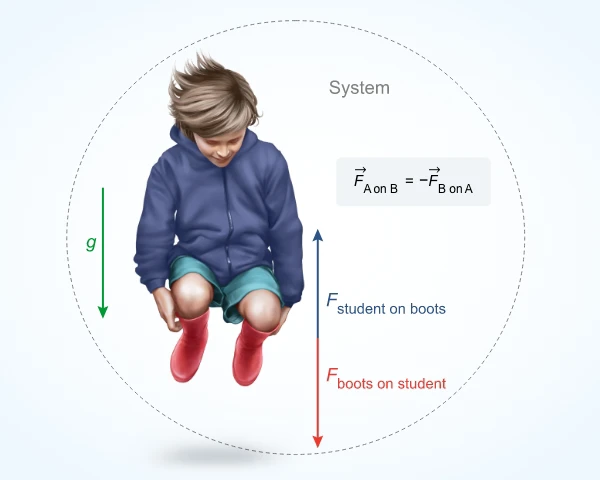
AP Science Lab Safety Procedures and Protocols

When it comes to AP science courses, ensuring the safety of students during lab activities is of utmost importance. AP science teachers should follow strict lab safety protocols to create a safe and secure learning environment. Here are some key safety measures that AP science teachers should implement:
Pre-Lab Safety Briefing:
Before conducting any lab experiment, it is crucial to provide students with a comprehensive safety briefing. This includes discussing potential hazards, explaining proper handling of equipment and chemicals, and emphasizing the importance of following instructions.
Personal Protective Equipment (PPE):
Students must be instructed to wear appropriate PPE, such as lab coats, safety goggles, gloves, and closed-toe shoes, during lab activities. Emphasize the significance of PPE in preventing accidents and protecting against chemical spills, burns, and other potential hazards.
Proper Handling of Chemicals:
Teachers should emphasize the importance of proper chemical handling. Students should be educated on the safe storage, use, and disposal of chemicals. It is crucial to provide clear instructions on how to measure and pour chemicals correctly to minimize the risk of spills or reactions.
Equipment Handling and Setup:
Students must be trained in the proper handling and setup of lab equipment. This includes ensuring that equipment is in good working condition, setting up apparatus securely, and understanding how to use equipment safely. Teachers should demonstrate correct techniques and closely supervise students during equipment setup.
Emergency Preparedness:
AP science teachers should have clear emergency procedures in place and educate students on what to do in case of an accident or emergency. This includes knowing the location and proper use of safety equipment, such as fire extinguishers, eyewash stations, and emergency showers. Students should also be aware of evacuation routes and assembly points.
Proper Waste Disposal:
Teach students about the proper disposal of lab waste, including chemicals, broken glassware, and other hazardous materials. Emphasize the importance of segregating waste and using appropriate containers. Ensure that students understand the hazards associated with different types of waste and the potential environmental impact.
Documentation and Record-Keeping:
Encourage students to maintain accurate and detailed lab records, including observations, measurements, and any incidents that occur during the experiment. This helps track progress and identify potential safety issues for future reference.
Remember, safety is a shared responsibility. Teachers should regularly reinforce safety protocols, provide ongoing supervision, and encourage students to report any safety concerns or incidents promptly. By prioritizing lab safety, AP science teachers can create a secure and conducive learning environment for their students.
Key Takeaways
There’s no question that understanding how to conduct a lab investigation is an integral part of teaching an AP science course. Hands-on learning through investigative discovery helps students develop strong critical thinking skills and allows them to truly understand scientific concepts.
Discover how UWorld supports AP science teachers who want to help their students develop college-readiness skills with their scientifically-proven Learning Tools for AP Courses.
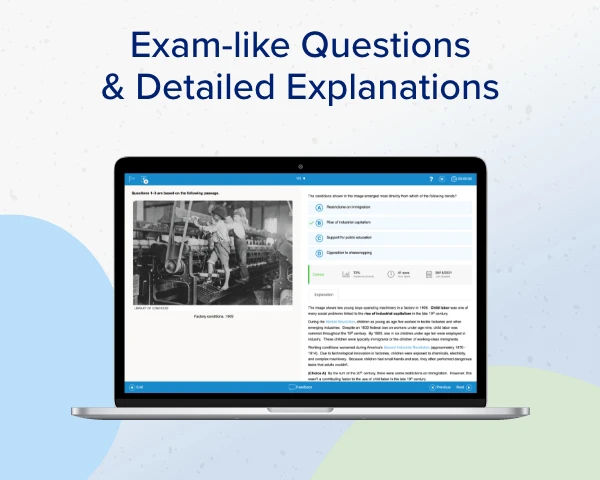
References
- The College Board. (2019). AP® Biology Course and Exam Description. AP Central. https://apcentral.collegeboard.org/media/pdf/ap-biology-course-and-exam-description.pdf
- The College Board. (2012). AP Biology Investigative Labs: An Inquiry-Based Approach - Teacher Lab Manual. AP Central. https://apcentral.collegeboard.org/media/pdf/ap-biology-teacher-lab-manual-effective-fall-2019_1.pdf
- The College Board. (2022). AP Chemistry Course and Exam Description. AP Central. https://apcentral.collegeboard.org/media/pdf/ap-chemistry-course-and-exam-description.pdf?course=ap-chemistry
- The College Board. (2019). How to Use This Lab Manual: Overview of the Investigative Labs. In AP Chemistry Guided-Inquiry Experiments: Applying the Science Practices (Teacher Manual) (pp. 4–7). essay.
- The College Board. (2020). AP Environmental Science: Course and Exam Description. AP Central. https://apcentral.collegeboard.org/courses/ap-environmental-science
- The College Board. (2023). AP Central: AP Environmental Science. AP Central. https://apcentral.collegeboard.org/courses/ap-environmental-science
- The College Board. (2015). AP Physics Lab Manual (Teacher’s Edition) - College Board. AP Central. https://secure-media.collegeboard.org/digitalServices/pdf/ap/ap-physics-inquiry-based-lab-manual.pdf
- The College Board. (2021). AP Physics 1 Course and Exam Description. AP Central. https://apcentral.collegeboard.org/media/pdf/ap-physics-1-course-and-exam-description.pdf?course=ap-physics-1-algebra-based
- The College Board. (2020). AP Physics 2 Course and Exam Description. AP Central. https://apcentral.collegeboard.org/media/pdf/ap-physics-2-course-and-exam-description.pdf
- Segura, G. (2019, June 21). Science Lab Experiments: Understanding their role in childhood education. Science First. https://www.sciencefirst.com/science-lab-experiments-understanding-their-role-in-childhood-education/